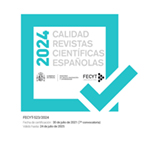«The Sun Is Eaten»: Representations, Practices, and Symbolisms of Solar Eclipse among Ancient Nahuas and Other Mesoamerican Groups
Abstract
This article is aimed at explaining the conceptions of the eclipse of the sun among prehispanic Nahuas, through the colonial written and pictorial sources. Although the starting point are ancient Nahuas and the main corpus comes from them, there is a strong support in ancient as well as present day Mayan data. Such support is also found in ethnographies of various contemporary Indian groups, and my own field work among Nahuas of Pahuatlan, in Sierra Norte de Puebla. Thus, it is offered a big picture of this phenomenon. The article explains the way in which an eclipse of the sun was represented, the various agents involved in it, the ritual practices implemented by Nahuas and other ethnic groups to reduce the attack suffered by this luminary, as well as the damaging effects produced by the eclipse. At the end, a hypothesis is advanced of the symbolical nature of an eclipse, based mainly on ethnographic data.Downloads
Article download
License
In order to support the global exchange of knowledge, the journal Revista Española de Antropología Americana is allowing unrestricted access to its content as from its publication in this electronic edition, and as such it is an open-access journal. The originals published in this journal are the property of the Complutense University of Madrid and any reproduction thereof in full or in part must cite the source. All content is distributed under a Creative Commons Attribution 4.0 use and distribution licence (CC BY 4.0). This circumstance must be expressly stated in these terms where necessary. You can view the summary and the complete legal text of the licence.









